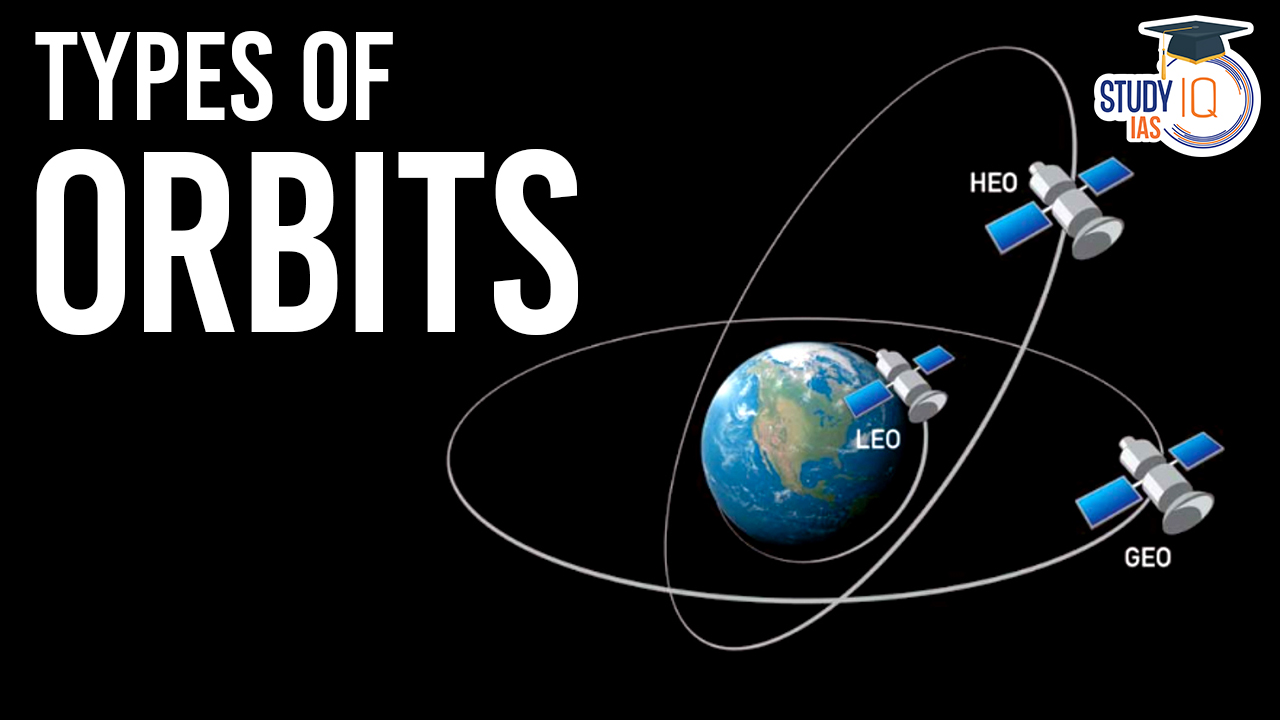Table of Contents
An orbit is a regularly repeating path that an object in space follows as it revolves around another celestial body. Objects that move around a planet or another body in space, following an orbit, are commonly referred to as satellites. These orbits can be categorized based on the altitude of the satellites from Earth, typically falling into three main categories: High Earth orbit, Medium Earth orbit, and Low Earth orbit.
What is Earth’s orbit?
An Earth orbit is the path an object follows as it orbits the planet. These orbits vary in altitude and purpose. Low Earth Orbit (LEO) is relatively close to Earth and hosts satellites for scientific research and Earth observation. Medium Earth Orbit (MEO) is home to navigation satellites like those in the GPS system. High Earth Orbit (HEO) includes communication and weather satellites located at greater distances. Geosynchronous Orbit (GEO) allows satellites to remain stationary over a fixed point on Earth’s surface, making it ideal for continuous communication. Polar orbits pass over the poles and are used for Earth observation. Sun-synchronous orbits enable satellites to revisit the same region at the same solar time during each orbit, essential for Earth monitoring.
Types of Orbits
An Earth orbit is a predictable, recurring trajectory that an object in space, such as a satellite, follows around another celestial body. These orbits are defined by their height, eccentricity, and inclination, which shape the path the satellite takes:
Height of Satellite
The distance between the satellite and the Earth’s surface influences the satellite’s orbital speed. Satellites in higher orbits move more slowly due to the stronger gravitational pull, while those closer to Earth move faster. For instance, NASA’s Aqua satellite, positioned at about 705 kilometers above the Earth’s surface, takes approximately 99 minutes to complete an orbit, while a communication satellite at 36,000 kilometers takes 23 hours, 56 minutes, and 4 seconds for an orbit. The Moon, at 384,403 kilometers from the Earth’s center, completes a single orbit in 28 days.
Eccentricity of Orbit
Eccentricity characterizes the shape of an orbit. A low eccentricity results in a nearly circular orbit, while higher eccentricities cause elliptical orbits with varying distances from Earth. The eccentricity is a measure of how far an orbit deviates from a perfect circle.
Inclination of Orbit
Inclination is the angle of the orbit concerning Earth’s equator. An inclination of 0° orbits directly above the equator, 90° crosses right above the pole, and 180° orbits above the equator but in the opposite direction of Earth’s rotation.
There are different types of Earth orbits, each serving distinct purposes:
High Earth Orbit
Situated at approximately 42,164 kilometers from the Earth’s center, high Earth orbit is a “sweet spot” where satellites match Earth’s rotation. A circular geosynchronous orbit in this zone allows a satellite to remain stationary over the same point on the Earth’s surface, ideal for weather monitoring and communication.
Medium Earth Orbit
Closer to Earth, these orbits, like semi-synchronous and Molniya orbits, have specific advantages. The semi-synchronous orbit, at 26,560 kilometers, allows satellites to cross the same two equatorial points every 12 hours, making it perfect for the Global Positioning System (GPS). Molniya orbits offer high viewing time over high latitudes and are used for communication and observation purposes.
Low Earth Orbit
Most scientific and many weather satellites occupy low Earth orbits. These near-circular orbits with varying inclinations enable them to monitor specific regions. Polar orbits, a subset of low Earth orbits, provide comprehensive global coverage as they pass from pole to pole roughly every 99 minutes, capturing both day and night views. These orbits often follow a Sun-synchronous path, ensuring that the satellite crosses the equator at the same local solar time during every orbit.
| Type of Orbit | Altitude Range | Eccentricity | Inclination | Notable Examples and Uses |
| Low Earth Orbit (LEO) | 180 km to 2,000 km above Earth | Low | Variable | Earth observation, scientific satellites, ISS |
| Medium Earth Orbit (MEO) | 2,000 km to 35,786 km above Earth | Variable | Variable | Navigation satellites (GPS), Molniya orbits |
| High Earth Orbit (HEO) | Beyond 35,786 km above Earth | Low to High | Variable | Geostationary orbits, Lagrange points, Sun-monitoring satellites |
| Geosynchronous Orbit (GEO) | About 42,164 km from Earth’s center | Circular | Zero | Communication satellites, weather monitoring |
| Polar Orbit | Various altitudes | Low | Near-polar | Earth observation, environmental monitoring |
| Sun-Synchronous Orbit | Low Earth Orbit range | Low | Near-polar | Earth observation, environmental monitoring |
Types of Orbits UPSC
An Earth orbit represents a recurring path that objects, typically satellites, follow as they encircle celestial bodies. These orbits are characterized by their altitude, eccentricity, and inclination. Low Earth Orbit (LEO), at lower altitudes, is utilized for scientific research and Earth observation. Medium Earth Orbit (MEO) hosts navigation satellites, including GPS. High Earth Orbit (HEO) encompasses communication and weather satellites at greater distances. Geosynchronous Orbit (GEO) allows satellites to stay fixed over specific Earth points, serving continuous communication. Polar orbits cover the poles for Earth observation, and Sun-synchronous orbits revisit regions at the same solar time. Each orbit type caters to distinct purposes in space technology.


 Agricultural Monitoring and Event Detect...
Agricultural Monitoring and Event Detect...
 Genetically Modified Crops in India, Reg...
Genetically Modified Crops in India, Reg...
 What are Polycyclic Aromatic Hydrocarbon...
What are Polycyclic Aromatic Hydrocarbon...





















